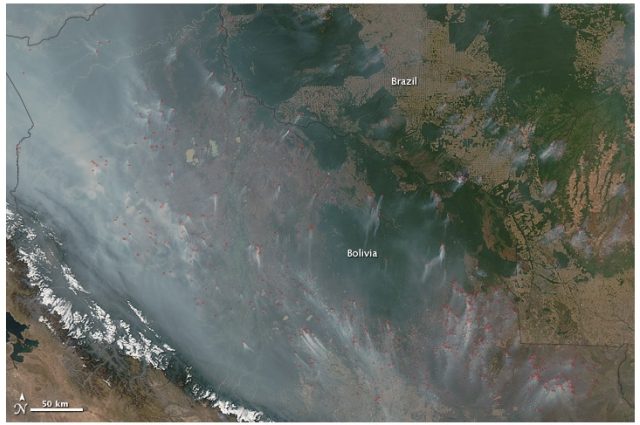New insight into global CO2 emissions from deforestation
Deltares and researchers from other institutions have drawn up a new time series for global carbon emissions from deforestation. The series is the missing link in terms of the improved understanding of the global carbon cycle and it implies that the natural uptake of CO2 by the land and oceans is more efficient than previously assumed.

The study shows that carbon emissions from deforestation between the 1960s and 1980s were lower than previous studies had assumed. By combining the time series with other datasets, the scientists show that the uptake of CO2 by nature is so far influenced less by climate change than was thought in the past. The new study was conducted by scientists from Deltares, VU University Amsterdam, Woodwell Climate Research Center, Columbia University, and Wageningen University and Research. The results are published in the scientific journal Nature.
Time series reconstruction
To estimate the carbon emissions in the principal deforestation areas in South America and Indonesia, the scientists used field observations of visibility data in a surprising way. If there are large numbers of forest fires, visibility declines due to levels of smoke and these visibility data are therefore a measure of the number of forest fires linked to deforestation in these areas. “Field observations of visibility at, for example, airports go back much further in time than satellite data. By linking them to deforestation and forest fires on the basis of satellite measurements for more recent periods, we were able to establish a new consistent global time series of carbon emissions from deforestation and in that way to clarify the role of deforestation in the global climate system,” explains joint lead author Margreet van Marle, a climate researcher at research institute Deltares.
Stable carbon cycle
Since the 1970s, we have known that about half of our carbon emissions from the burning of fossil fuels and deforestation stay in the atmosphere. The other half are reabsorbed by oceans and land. Extensive research has been conducted into whether this ratio changes in the long term, possibly because climate change impairs the capacity of vegetation and oceans to absorb CO2. This could lead to an acceleration of climate change because more CO2 is left in the atmosphere. Previous studies provided evidence for this but they also stated that firm conclusions were difficult to draw, particularly because emissions from deforestation were uncertain and based on inconsistent data series.
The new time series shows that, compared to earlier studies, emissions from deforestation were lower from the 1960s to 1980s. The scientists therefore believe that a larger fraction of the total emissions stayed in the atmosphere. Over the entire sixty-year time series, this results in a negative trend: a sign that CO2 uptake by nature has kept pace with growing emissions from fossil fuels and may even have become more efficient over time. According to joint lead author and VU climate researcher Dave van Wees, this negative trend is now robust but the cause remains uncertain. “It may well be that some of the climate feedback loops that we are concerned about, such as the thawing of permafrost or more forest fires, are already making their mark but being offset by other mechanisms. More research is needed to pinpoint the roles and trends of individual mechanisms.”

Implications
According to Guido van der Werf, a professor at the VU University of Amsterdam specialising in the global carbon cycle who set up the study, it is difficult for the time being to draw firm conclusions from this paper about future climate change. “What we can mainly prove is that the worst nightmare scenarios have not yet materialised and that the news is not quite as bad. But we cannot say that we now have more time to achieve the climate targets. That is primarily because the good news is mainly based on new insights relating to the period of the 1960s, 1970s, and 1980s. Looking at the last few decades, it might be that the improvement in efficiency has stalled.”

